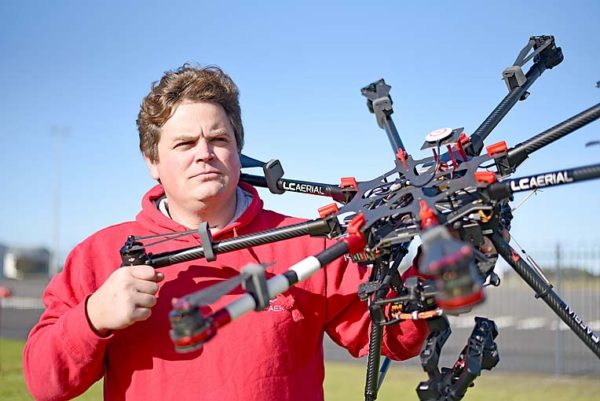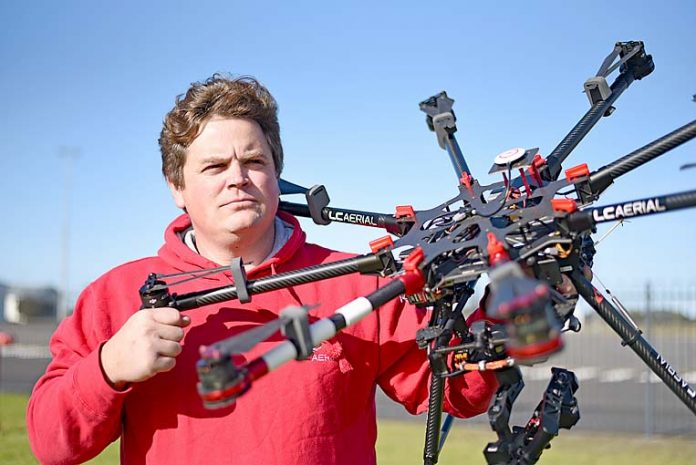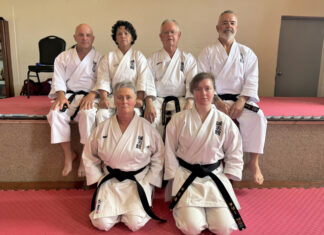
THE Mount Gambier Airport has issued a blunt warning to users of remotely piloted aircraft – commonly known as drones – to avoid restricted airspace and adhere to the rules.
This comes as claims surfaced that a number of drone hobbyists have been operating in restricted airspace in Mount Gambier, including at Corriedale Park on Wireless Road.
The Civil Aviation Safety Authority (CASA) has also renewed a warning of the dangers of flying in restricted airspace after a reported mid-air collision between a drone and plane in Adelaide this week.
It is understood the popularity of drones has soared in Mount Gambier over the past 12 months with fears mounting they could cause a mid-air accident with a plane or helicopter.
Mount Gambier Airport manager Ian Fritsch has called for recreational operators to check CASA’s “Can I Fly There” online app and to dob in drone users who were breaking the law.
He said he did not have any concerns with certified commercial operators working in the district, but with some of the drone hobbyists.
“They are the ones I worry about,” Mr Fritsch said yesterday.
He said drone operators could not fly in any of the approaches to the Mount Gambier Airport, which included the restricted flying zone at the Corriedale Park area.
“People cannot fly in the Corriedale Park space out to the airport – it is a no fly zone, that is that,” he said.
“People don’t realise how far out the approaches to runways are.
“They have no idea – they go out a long way,” Mr Fritsch explained.
He raised concerns that some hobbyists were willing to break the rules to get the most “sensational shots” for YouTube.
“They might not care about public safety or the law and they will push the boundaries,” Mr Fritsch said.
While he did not think little kids flying drones would “bring an aeroplane down”, he warned the more brazen users could trigger an incident.
Commercial drone operator Charles Prime – who has CASA certification – warned people buying drones over the counter or online might not fully understand the potential dangers and restrictions of operating the machines.
“They don’t know what they don’t know and they might fly a drone in an area which they think is okay, but they could end up causing a catastrophe,” Mr Prime said.
He called for better education for hobbyists to minimise potential negative fall-out in the commercial drone sector.
“Every incident that happens could potentially hinder my income,” said Mr Prime, who explained there had been calls for the sale of drones to be banned in Australia.
“This is a knee-jerk reaction because the drone industry is evolving too fast for regulators.”
Mr Prime said drones were covered under the same law as aircraft.
While regulations allowed drones to be flown 5.5km from an airport, he said approaches to airfields were also restricted.
“People without the right education, just don’t understand this – they must check the CASA app,” Mr Prime said.
Apart from possible aviation problems, the use of drones also cause problems in regard to privacy, falling onto people and possibly causing other accidents.
Mr Prime said he was particularly concerned about drones hitting ETSA helicopters that were sweeping power lines around the district.
He warned some drones weighed a number of kilograms, which meant they could potentially hurt someone if they fell on them.
“It is especially dangerous if the motors are still spinning – the propellers are as sharp as knives.”
He said operators were not allowed to operate drones within 30 metres of people or buildings.
CASA has also warned that drones could not been flown near bushfires and emergency situations such as traffic accidents and police operations.
Regional Express declined to comment on the issue.






